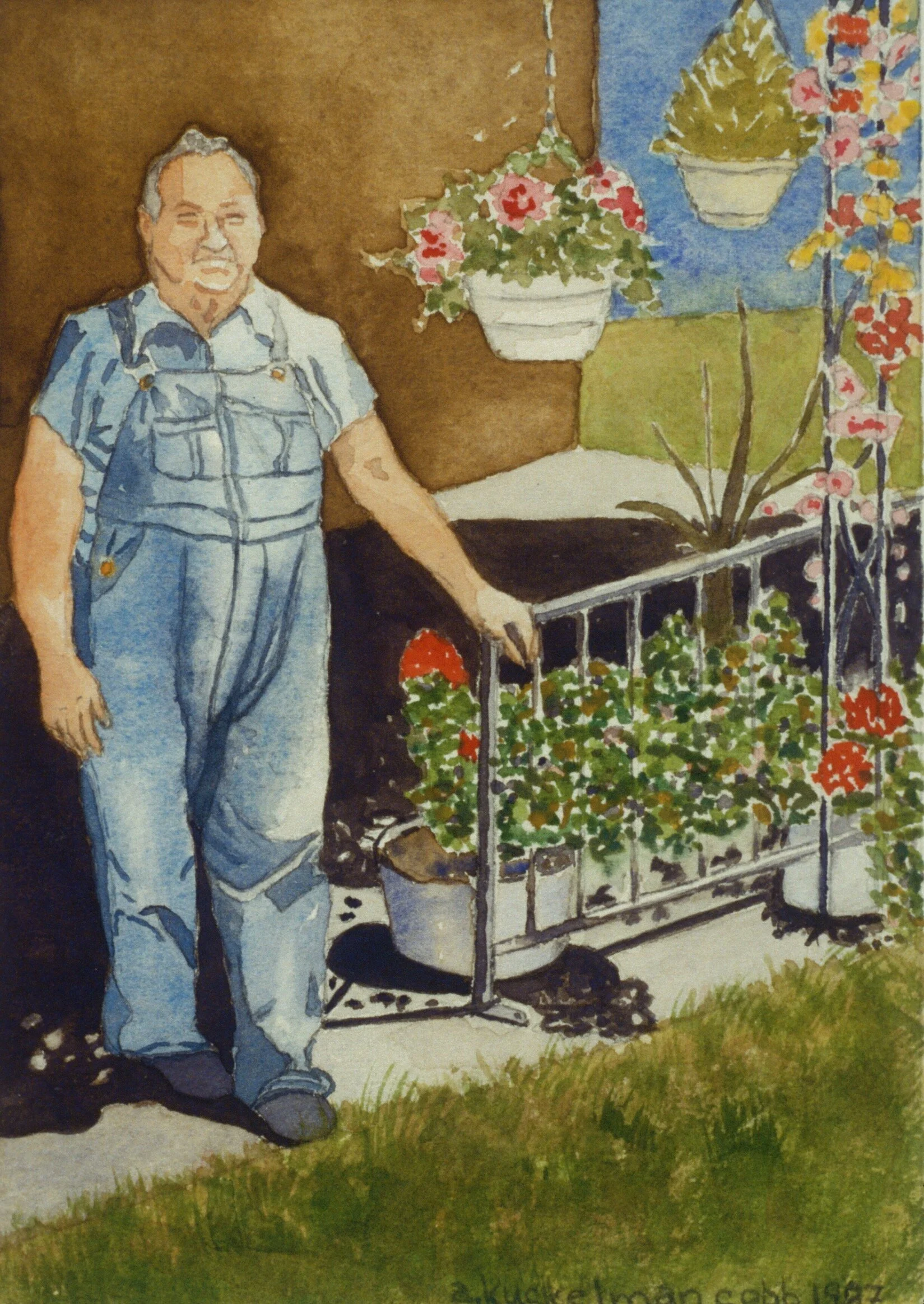Braiding Our Lives Through Caring Memories
If nursing, anthropology and art are the three main threads of my life, my mother was the one who began the braid. She was a woman of great energy, a community leader and feminist, although she never claimed those labels. My father was immensely proud of her, gladly ceding attention to her whenever he could. She was fluent in two languages—English and the Bohemian of her childhood. Kansas was a state settled by a variety of ethnic Europeans, so when she became a teacher in a one room country school at age 18, she had the challenge of educating children speaking 5 different languages. She loved it and taught for 13 years before marrying my second-generation German father. Some of my early memories are of listening to my mother and her sisters speaking Bohemian with total abandon, aware that no one else in the room would know what they were saying. It was my first inkling of the power of fluency in a second language!
My mother was, in my view, a natural empath. She cared about children, she cared about friends and she cared about community. A good deal of that energy went into the task of starting a 4-H club in our county and serving as a club leader throughout my childhood. That particular organization was profoundly formative for me. It is where I learned Roberts Rules of Order, how to conduct a meeting, how to give a speech, how to demonstrate a skill, how to make my own clothing, and how to accept directions not only from my parents but also from other parents of 4-H kids.
An outgrowth of 4-H was the International Farm Youth Exchange Program (IFYE). My older sister Jane applied to IFYE and was accepted for a 6 month stay with farm families in Uruguay. She came home completely fluent in Spanish, and I was impressed! In exchange, my parents then participated as an IFYE host family, inviting a woman from India, and the following year, a woman from France to live with us.
All these experiences created in me an openness to ways of life of people from other cultures. They eventually led me to apply to The Experiment in International Living, during which I lived for a summer in the home of a Swiss family. And not many years later, to leave for a yearlong stay working as a volunteer nurse in the city of Belem do Para, at the mouth of the Amazon.
When I first began painting, many of my watercolors were realistic, with images reflective of values of my childhood. For example, a rather heavy-handed watercolor of a Benedictine nun in the garden spoke of my Catholic upbringing and tending the earth.
The portrait of a farmer in his clean, well-worn overalls recalled my rural roots.
The lace handkerchief and embroidered apron in two of the paintings signified my appreciation of handcrafts not only of the home, but also of other cultures, including a handmade leather necklace from Indonesia, rings from Africa and India, and seashells from who knows where?
At this stage in my efforts to make art, I was motivated to learn techniques and skills that would accurately depict the items I chose to represent. I hoped that I could really help the viewer to see, and even to feel, the intricacies of the lace in those paintings. Or perhaps to wonder what some of the other items were, and where they might have come from.
As I look at the photos of those paintings now, I clearly see that parts of the images are well done, and parts are not. I could no doubt see it then. But the desire to learn and to try, and the encouragement of others did, and still does, carry the effort forward.


